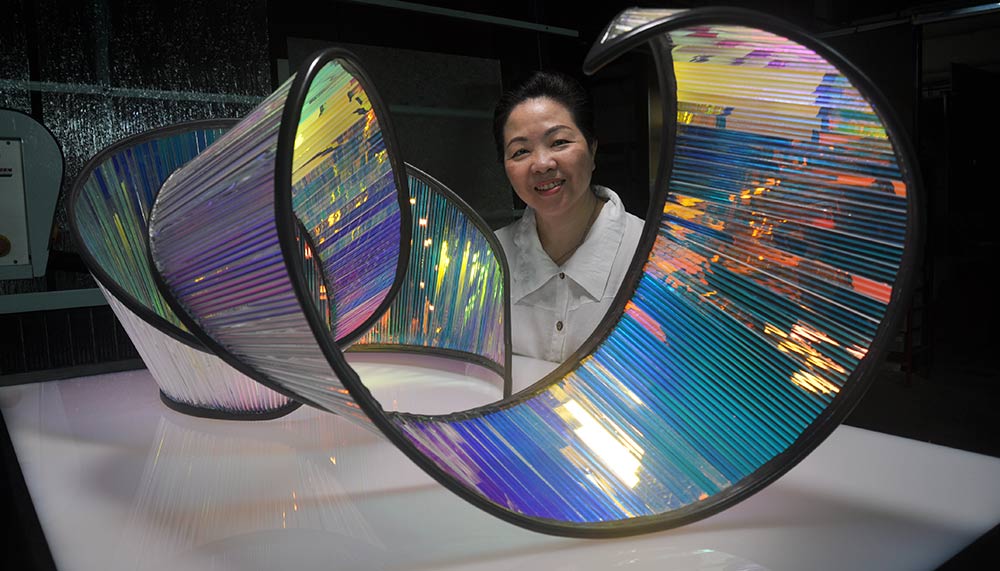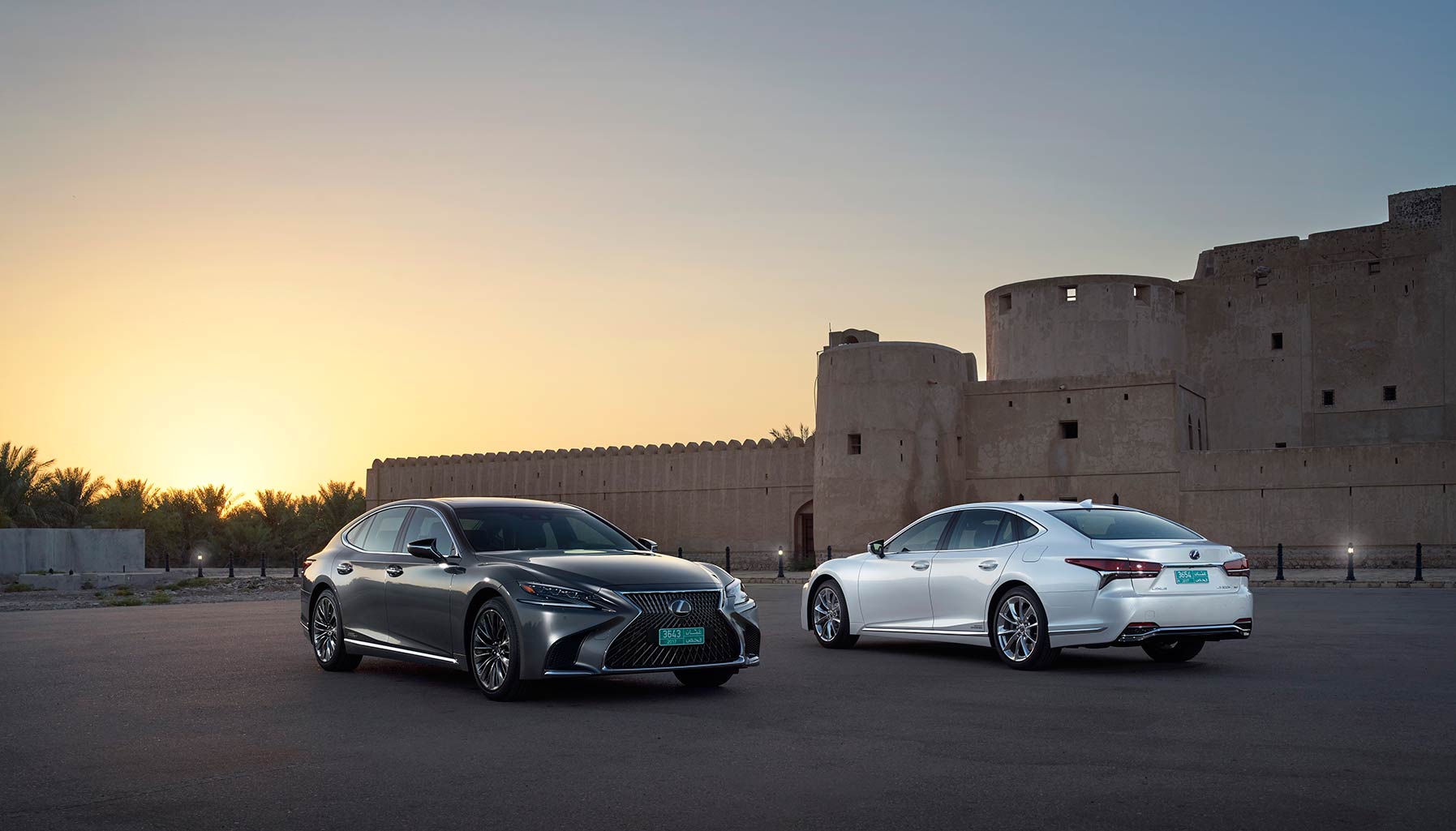Four Asian artists interpret the luxury sedan using metal, paper, glass and wood
Beautifully designed both inside and out, and equally poetic in motion, the Lexus LS drove four of Asia’s pre-eminent artists to create masterpieces inspired by elements of this luxury car.
The materials these artists have chosen to employ – metal, paper, glass, wood – are incredibly varied. This diversity is unusual and also appropriate, since the interior of the Lexus LS draws plenty of inspiration from non-automotive sources, particularly from traditional art forms.
Much like the Lexus LS itself, these artists are also not afraid to forge their own paths. Take Himanshu Agrawal, for instance.
“I don’t believe in being neat. If you want ‘neat’, use a machine. Something that’s human will always be imperfectly perfect, but always beautiful and real,” he declares.



Based variously in Mumbai, India and Lodz, Poland, he’s been at the forefront of origami art for close to 30 years, setting five world records for large-format origami art along the way.
His art can be large (a life-sized origami elephant) or small (possibly the most beautiful origami swan you’ve ever seen), but common to all is the exquisite craftsmanship and intricacy.
What Agrawal has created to celebrate the Lexus LS is a tour de force. Innumerable facets on folded paper come together to create a work of art like no other. Quite literally, since Agrawal says “even if you fold the same pattern twice, they will always be different, because they are organic and folded by the motion of your finger muscles”.
This subtle interplay of light and shadow mirrors the Lexus L-motif pleated fabric seen on the door panels of the Lexus LS. Like Agrawal’s paper creation, they are shining examples of the origami art form, and are at once delicate and millimetre-precise.
The use of origami is also appropriate because one of the tests in becoming a Lexus master craftsman is that he must able to fold an origami cat one-handed in under 90 seconds with his non-dominant hand.
Agrawal’s faceted paper creation also brings to mind cut crystal glass or a diamond. These facets can also be seen on the Lexus LS, with kiriko-cut glass (a glassworking technique similar to cut crystal) adorning the door panels. A first for a production car, the kiriko-cut glass is as mesmerising to behold as it is to touch.



Depending on the angle of natural or artificial light illuminating it, the pleated fabric and kiriko-cut glass can look radically different, transforming the entire ambience of the cabin.
The interplay of light is exactly why Florence Ng’s chosen medium is glass, a material she’s no doubt familiar with, being one of the field’s local pioneers.
“Glass is like a canvas. I turn ordinary glass into art that creates an identity for spaces. It’s a plain, transparent flat sheet, but when glass is well worked, it enhances the mood of a space. It’s a very fascinating medium – you can melt it, blow it, break it, paint it, colour it,” Ng explains.
Her interpretation of the all-new Lexus LS resulted in a twisting, asymmetric spiral of narrow glass strips set within a metal frame. The iridescent glass panes create a kaleidoscopic effect, accentuated still further by the piece’s undulating form.
While Ng’s sculpture conveys fluidity and dynamism, both elements which the Lexus flagship has in abundance, producing it was no easy task. In fact, Ng remarked that it would be easier if her sculpture was even larger than it is. “Every strip of glass is different and requires a lot of precision,” she adds.
Ng’s art turns precision into an art form and the same could be said about the wood used in the interior of the Lexus LS.



Wood is a familiar material in automotive interiors, but the Lexus LS elevates the material to never-before-seen heights in three distinct forms: Art Wood Organic, Art Wood Herringbone and Laser-Cut Special Wood.
The process is exceptionally laborious as multiple razor-thin veneers first need to be hand-picked and then sandwiched together to accentuate the wood’s natural beauty. The amount of labour involved is almost unfathomable.
To realise the Art Wood panels in the Lexus LS entails a two month-long, 18-stage process. Suffice it to say, the amount of millimetre precision required in every stage of the process is demanding, to say the least. Art Wood Herringbone, for instance, has to be sliced again after the layers are sandwiched, a task made all the more complex owing to the multiple veneers and grains that make up the panel.
It’s a fascinating duality because while the material itself is natural, the finished product displays forms and patterns that do not exist in nature.


Human ingenuity enhancing natural beauty is the main driver behind the piece Malaysia’s Cheryl Heap crafted for the Lexus LS. Paying homage to the car’s pleated fabric and kiriko-cut glass, Heap’s work takes the form of an imposing wooden sculpture, an obvious choice of material, given her love for the natural world.
But perhaps the piece that best sums up the Lexus LS is Singapore-based artist Michelle Yu’s tribute to the Lexus LS: a six-panel, acid-etched metal ‘accordion’. Like the Lexus LS, the four key elements of the vehicle – glass, wood, light and origami – are referenced in Yu’s amazing piece.





Her illustrations flow seamlessly from panel to panel, with the final piece tying together all the above elements, represented by an anchor surrounded by rock. This clearly references the Lexus LS and its superb build quality.
The illustrations on each panel are shaded using a cross-hatching technique, something that Yu says is a common technique in metal etching and coincidentally, is visually similar to the wire mesh spindle grille on the Lexus LS.
As with many elements on the Lexus LS, even something as seemingly minor as the spindle grille is remarkably considered. The wire mesh contains over 5,000 facets and took nearly half a year of continuous work by an engineer to refine and put into production.
Is it beautiful, though? Well, they say beauty is in the eye of the beholder, but another way of looking at it is how Yu describes beauty.
“Beauty is in the process of creation. No matter what the end result is, if I enjoyed making it, it will be beautiful,” she says.
Going by the smiles and obvious pride present on the faces of all the engineers who were involved in the development of the all-new Lexus LS, and indeed, the four artists who created the masterpieces inspired by the vehicle, the answer to the question above is certainly a resounding ‘yes’.
Experience the Lexus LS craftsmanship through the eyes of four renowned artists by visiting LexusAsia.com/allnewLS.
This article is brought to you by Lexus.






